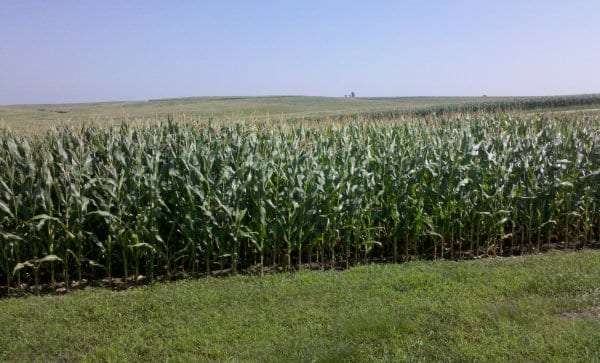Ag Informer – How Historic are these Markets?

A rising tide lifts all boats, and that might be what’s happening in the grain and oilseed markets. This week kicked off with another big rally in prices.
May corn prices are above $8 per bushel, and soybean prices are above $17 per bushel. Wheat prices hit record levels to round out March, and cotton prices are creeping close to levels not seen in a decade.
“The last time we had front-month corn trading above $8 was in 2012,” says Brian Splitt, technical analyst with AgMarket.Net. “That was in August when we had a drought. When you look at what front-month high was made in 2012, it was around $8.43.”
Check the latest market prices in AgWeb’s Commodity Markets Center.
On Monday, April 18, May corn prices hit $8.13 per bushel.
“The whole board is going together,” Splitt says of several key contracts. “This is not just the front leading it. The front is more than the back end, but we’ve got all contracts making new highs.”


Watch Splitt on “AgDay”:
Several factors are pushing prices higher. Andrew Jackson, commodity broker with Producers Hedge, says slow planting progress is the No. 1 issue on his mind.
As of April 17, USDA estimates 4% of the U.S. crop has been planted. That compares to 7% planted by this time in 2021 and a five-year average of 6% planted.
In soybeans, only 1% of the U.S. crop is in the ground, which is similar to the five-year average.
“On the weather front we’ve had a less-than-ideal start to the planting window in the Corn Belt,” says Joe Vaclavik, president of Standard Grain. “That doesn’t mean that things will be delayed to any material degree.”
Vaclavik says the corn market is attempting to buy back some of the acres USDA dropped in its corn estimate in the March 31 report.
“I just don’t know if that short of shift back to corn acres is even possible given inputs and fertilizer costs,” he says. “It is still a wildcard, but it’s tough for me to believe corn will buy back a material amount of acres at this point.”
Watch Vaclavik on “AgDay”:
Even if planting is delayed, Jackson says the markets are providing an incentive to plant every acre possible.
“But the question is when will we be able to. We don’t want to plant this stuff too late, as we start losing yield potential,” he says. “But still, I do think the farmer’s going to have every incentive to put in the ground because the later we get, the more the market’s going to try to factor that in.”
Currently, the corn and soybean markets are inverted, which means the nearby futures contract month’s price is higher than a later month.
To the buyer, Jackson says, an inverse market says: Don’t buy everything you need. Wait, prices will get better.
To the seller, inverse markets say: Move it all; don’t hold on to it.
This situation, Jackson says, could crate good basis opportunities for farmers this season, as well as high bids for the earliest-harvested crops this fall.
For farmers who are facing less-than-ideal basis levels, Jackson says they should still be actively marketing their crops: “When was the last time you had an opportunity to sell $8 corn?”
Will this trend of high prices continue?
Expect to see a little pullback from the high prices that started the week, says Jack Scoville, vice president of Price Futures Group.
“But there’s really nothing to stop this thing from going higher yet,” he says. “With the fundamentals and the way things are with the news, it looks like we’re still going to continue to hold and be very strong as we move forward.”
“The markets will just be trying to hang on to what we gained today through the end of the week,” adds Chip Flory, host of “AgriTalk.”




